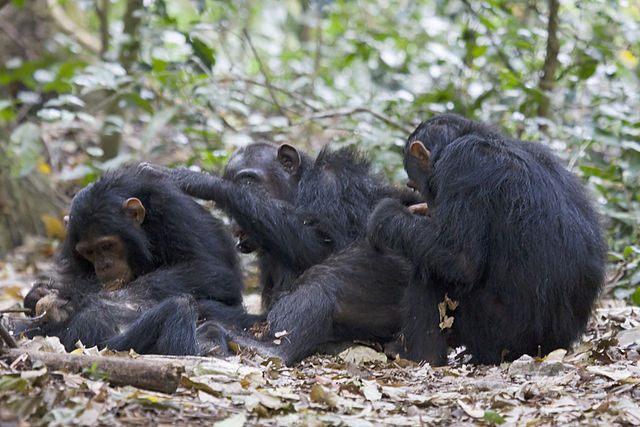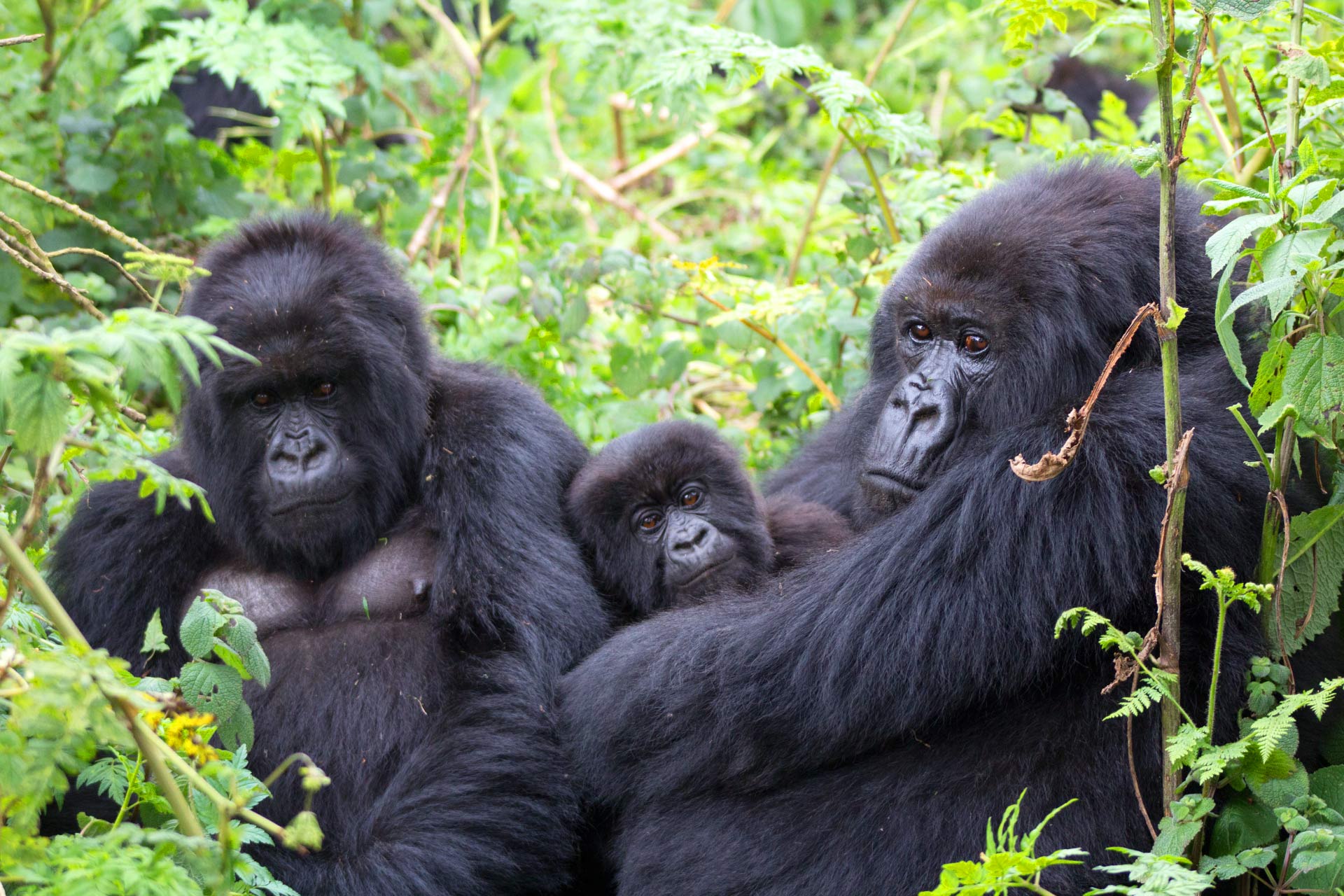Gorillas And Chimpanzees Safari : Gorillas are enormous, primarily terrestrial herbivores that live in the tropical forests of equatorial Africa. The gorilla, the largest of the great apes, has broad shoulders and chests, massive hands that resemble human hands, and small eyes set within hairless faces. Eastern and western gorillas are two of the two species that make up the genus Gorilla, and there are also maybe four or five subspecies. After chimpanzees and bonobos, gorillas are our closest living cousins in terms of DNA similarities. Visitors can get a close-up look at these many gorilla species in Tanzania while on safari.

Gorilla’s reproduction
Gorillas often live in families of five to ten, although they can have anything from two to more than fifty individuals. A dominant adult male, referred to as a “silverback,” leads each group and holds onto his position for a long time. The relationship between the silverback and his women serves as the foundation for gorilla social behavior. At the age of seven or eight, females reach sexual maturity, but they don’t begin reproducing until a few years later. Males reach maturity at a later age. In general, a female who has begun to reproduce will only have one child every four to six years and three to four in her lifetime. Though, during Tanzania safari you may be able to see and experience them.
Gorillas’ food and diet
A gorilla’s day is broken up into periods of rest and movement or feeding. Within and between species, diets vary. Fruit only makes up a very small portion of the diets of mountain gorillas, who mostly consume vegetation, such as leaves, stems, pith, and shoots. Since there is ample food available to mountain gorillas, neither individuals nor groups must contend with one another. Their daily travels typically cover hardly more than 500 m (0.31 mi) and their home ranges range from 3 to 15 km2 (1.2 to 5.8 sq. mi). Mountain gorillas can thrive in a range of habitats and have varied diets, while only eating a few species in each, Gorillas And Chimpanzees Safari
Eastern lowland gorillas eat a wider variety of seasonal foods. Although they frequently consume leaves and pith, up to 25% of their diets may consist of fruits. Lowland gorillas must move further each day since there is less fruit available; their home ranges range from 2.7 to 6.5 sq.km (1.0 to 2.5 sq. mi), with day ranges 154-2,280 m. (0.096–1.417 mi).
Their mode of communication
It has been shown that 25 different vocalizations exist, several of which are primarily used for group communication in areas of dense vegetation. The most frequent sounds made while moving are grunts and barks, which reveal the locations of specific group members. When restraint is needed in social situations, they can also be used. Screams and roars are alarm or warning signals that are typically made by silverbacks. During eating and resting periods, deep, rumbling belches are commonly heard and indicate contentment. Taking a safari in Tanzania is really pleasurable for many tourists especially Gorilla safari.

Locations of gorillas
Visitors can experience an incredible gorilla safari with a Tanzania safari trip to Volcanoes national park in Rwanda and Mgahinga national park in Uganda.
In the Virunga Mountains (Volcanoes National Park), Rwanda offers fantastic mountain-gorilla trekking. You will travel in groups of up to eight people to spend an hour with a gorilla family.
Additionally, Uganda provides mountain gorilla trekking in Bwindi Impenetrable National Park or Mgahinga National Park.
Chimpanzee’s locations
Tanzania provides three distinct chimpanzee encounters in Gombe national park, Mahale Mountain national park, and Rubondo Island national park, each of which is a little bit different. Rubondo Island Camp, which is located in Lake Victoria’s Rubondo Island National Park, is the area that there is a high number of Chimpanzees. Visitors can participate in this one-of-a-kind adventure by the help of the rangers habituate the chimpanzees to human during Tanzania safari adventure.
Professor Bernhard Grzimek of the Frankfurt Zoological Society originally created the park as a refuge for endangered species. In the first such attempt to rehabilitate caged chimpanzees, he released 16 chimpanzees rescued from European zoos during a 4-year period (1966–1969). They are now again in an unaccustomed state resembling wild chimpanzees. The population has increased from 16 to about 35, Gorillas And Chimpanzees Safari
Not only have the chimpanzees benefited from this endeavor, but the national park as a whole has seen significant improvements as well. The island’s biodiversity was boosted and its habitats were strengthened by the introduction of the chimpanzees, as well as other species like elephants and antelope, allowing all species to flourish. The local economy has benefited and the sustainability of this animal refuge for future generations has been secured by turning Rubondo Island into a profitable, eco-friendly vacation destination in Tanzania, Gorillas And Chimpanzees Safari
Rubondo is a perfect stop on Tanzania safari itinerary and gorilla trekking tour because it is situated halfway between Rwanda and the Serengeti.
Welcome to Tanzania, where you may experience the best gorilla safari and marvel at incredible chimpanzee observations to make your safari truly unforgettable. You will get to know why the most popular adventure safari in Africa is a Tanzania safari vacation. You’ll discover why a Tanzania safari excursion is the most well-liked adventure safari in all of Africa.


